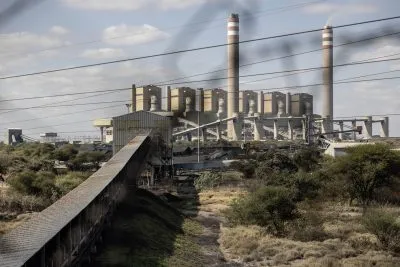South Africa is one country that has already taken the bull by the horns and plotted its electricity generation for the next 20 years, through an Integrated Resources Programme in which renewable energy takes pride of place. However, in the meanwhile, King Coal rules. Tom Nevin reports from South Africa.
South Africa’s energy fortunes from 2010 to 2030, renewables included, are in the care of the Integrated Resources Programme 2010.
The plan forecasts the country’s electricity demand for the next 20 years, and determines how this demand is to be met. It sets out the generation technologies to be used and the planned mix of primary energy options over this period, such as the mix between hydrocarbon (coal, gas, diesel), renewable (hydro, wind, solar), nuclear, pumped storage and other power generation technologies.
So IRP 2010 enables the necessary short, medium and long-term investment, funding and business plans to be developed to give effect to IRP 2010, and this then sets the electricity price trajectory for years to come. It sets long-term investment directions and decisions valued in excess of R1700bn ($19bn) over the next two decades.
As Eskom and the power generation sector is the biggest emitter of CO2 in South Africa, the selection of appropriate technology and primary energy options made through IRP 2010 dictate the government’s policy commitments for the reduction of CO2 emissions. While it is not cast in stone but is subject to periodic review and adjustment, IRP 2010 is critical to security of electricity supply and economic growth in South Africa.
The final Policy Adjusted IRP 2010 increased the new generation capacity build over the next 20 years from the 52,248 MW proposed in the first draft to 56,359 MW. As a result, a massive and ambitious new renewable and nuclear build lies ahead. Realistically, it also shows that electricity generation from coal and other hydrocarbons is here to stay, at least for the next 20 years and more.
“The road ahead as mapped out in IRP2010 is ambitious but do-able”, says mining house Xstrata’s Mike Rossouw, chairman of the IRP 2010 technical task team, “but it requires a new mindset – it is definitely not going to be business as usual.”
Energy liberalisation is currently confined to renewables and in a short time private investors have shown an appetite for their long-awaited involvement. Such interest is reflected in a new study by top US-based research body the Pew Charitable Trusts, which says South Africa has quickly become a world leader in the green-energy race, and “a cornerstone of clean energy development for the entire African continent”.
Pew reports that South Africa is now the ninth-leading destination for clean energy investment among the G20 (Group of 20 of the world’s developed and emerging economies), after coming in last in 2011. Investment rose from less than $30m in 2011 to $5.5bn last year, an increase of 20,500%. Clean energy investment in South Africa is considered likely to remain strong in coming years as the country implements its relatively new renewable energy tender agenda.
After lengthy delays in the initiation of national clean energy programmes, South Africa’s solar sector attracted $4.3bn last year, or 80% of the total clean energy investment. Another $1.1bn went to the wind sector.
Want to continue reading? Subscribe today.
You've read all your free articles for this month! Subscribe now to enjoy full access to our content.
Digital Monthly
£8.00 / month
Receive full unlimited access to our articles, opinions, podcasts and more.
Digital Yearly
£70.00 / year
Our best value offer - save £26 and gain access to all of our digital content for an entire year!
 Sign in with Google
Sign in with Google 


